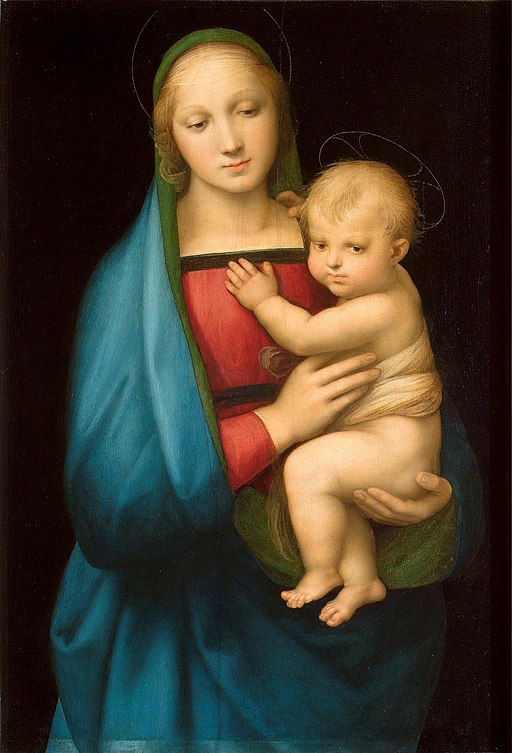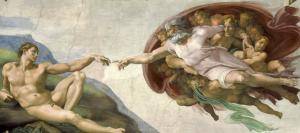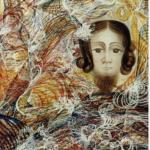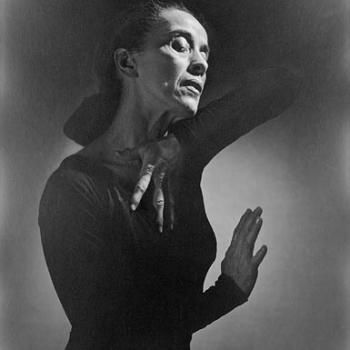
High Renaissance Art Defined
The 16th century brought us many brilliant masters of this technique now known as the Renaissance period. Leonardo da Vinci, Raphael, and Michelangelo… truly brought out the best of what was likely an era of new ideas in humanism and naturalist styles.
What is important to note with High Renaissance art is technique and themes. To impress a sharp and clear picture, High Renaissance was structured with visual, symmetrical, and compositional perfection. Overall, themes seemed to center on humanistic and heroic scenes with a mastered technique of drawing and conception with an overwhelming amount of themes conceived in religious theology. The techniques of High Renaissance art are sfumato(softening the transition between colors), chiaroscuro(use of light and shadow), perspective and foreshortening(method of rendering a specific object or figure in a picture in depth and proportion). All of these techniques were hallmarks of this era and changed art history forever.
Modern Religious Artists with High Renaissance Techniques
Whenever I discover a new artist I get excited about, I want to share it with the world. My friends, family and of course in my writing. These artists are truly inspiring and talented with their passion and technical knowledge of the arts laid out in their many different works and exhibits. To find not one, but several modern artists in the twenty-first century that implement the methods of the High Renaissance period was a task in of itself but truly worthwhile in the end.
Tyler Ballon
Ballon’s precision to his craft is one of extraordinary takeaway—-he does not aim to imitate classic works of art, he finds the heart of each theme, courting the style to make truly it his own.
Tyler Ballon’s connection to the biblical readings of Abraham from the Old Testament showcase an early depiction of these stories in his works. The blue blanket in his masterpiece Madonna and Child (2020) is to be admired for it’s intricate placing in relation to the Virgin Mary’s cape draped across the Italian Quattrocento(see picture at top of article for an example). It is also related to the red and blue garments in Sacrificial Lamb(2020), even as it is astoundingly accurate and wonderfully detailed in original form.
Ballon uses a deep palette of light and shadow (chiaroscuro)that masterfully draws out the human focus of the pieces, keeping to traditional depictions of biblical clothing in modern settings. I highly recommend checking out his gallery, as his talent is meticulous and beyond brilliant, in my opinion. His deeply entrenched love of raw storytelling in the expressions and body language of his characters and scenery which is often based on his own background. Large scale scenes with a religious or spiritual tone are sometimes set in the backdrop of his childhood home of Jersey City and gives us as the audience a gritty and emotional connection directly to the artist.
The details of realism and layered emotions especially in the heavily inspired Caravaggio piece Deposition (2018)and the impressive full length piece Mary in Prayer (2018) all support his true passion for the technical flawlessness of the masters of the Renaissance Period.
Here is a more in depth look at his portfolio of work.
Titus Kaphar
Art is meant to provoke thought. I’ve always believed that it is meant to show us the evils of society and make us take a deeper look in the mirror. Sometimes that can make the mirror break, shatter or make us trip up and fall flat on our faces in terror and fear. The fear is palpable and reaches you in places you never thought it could. Your local grocery store, your old home town, your childhood neighborhood. It’s because we are all culpable in the scope of time and history—-history is apart of us we make it everyday, and by allowing things to happen, we become apart of the horror.
Titus Kaphar guts out the vision of what makes art comfortable and cuts, overlaps, stretches and wraps his canvas with layers of materials, impressing a unnerving and visceral reaction of estrangement.
He does this in his layered and sliced portrait of an African American woman peeking behind a continuously folded and cut off, well-known portrait of Thomas Jefferson, made by Rembrandt Peale in 1800. It is uncomfortable but the vision is clear: he wants to hold hypocrisy in history accountable. Whether it’s religion, colonialism or The former President of The United States, Thomas Jefferson.
To what is an intensely thought provoking piece, we have Kaphar’s Black Jesus (Jesus Noir) (2020). In a desacralized church in Brussels, Belgium, this piece was presented to an impacted audience, wherein a bust of a young African American man is seen duct taped to a 19th Century French painting of Jesus.
It delivers a strong and powerful voice to all who see it, of a loss of African American representation in religion, in history, in the world. His technique is very much akin to the old masters to the High Renaissance and I applaud him for the bravery and bluntness in his craft.
Harmonia Rosales
A three dimensional landscape of a Baroque flower wreath surrounding the typical Madonna and Child is where we start our journey—-but add in the not so typical brushstrokes of blue and silver into the skin tones of the African-American mother and child and you get The absolutely stunning work of Rosales’ Birth of Eve (2018).

Her ideals of strong female representations in famous religious works such as Michelangelo Buonarotti’s Creation of Adam(dated c. 1508-1512), has sparked both criticism and acclaim, causing an interesting perspective and conversation. The Creation of God (2017) is almost identical in the gestures and placing of the putti and the other cast of Angels and of the representation of God, but with key differences.
It shows the famous Western scene, reimagined for this first time in art history, is the Creation of God as a black woman. Rosales’ keen insight into the raw color and metals she folds into her canvas gives depth, weight and dimension to her subjects(some look as though you could step right into them!) and with her impeccable style attributing to the old Renaissance masters (of which she openly admires), we can see that inspiration is certainly more than just a passing fancy. The golds and pinks that are set by Michelangelo to adorn and surround God is the only color change in what is essentially an identical chromatic match up to the original.
Rosales’ gorgeous array of work create a perfect tribute to the original works while creating the perfect balance: actual representation for African-American’s and a homage to the masters of the High Renaissance period.
Tsoku Maela
The exquisite symmetry and symbolism aligned in the medium of photography in the portfolio of spiritual artist Tsoku Maela may not be veritably defined as High Renaissance, but as I keep going back to this artist’s work, I can’t help but feel the imagery and chromatic is very similar.
Bardo (2017), is an example of a highly symmetrical photograph that almost looks like a painting that lends to a connection to the Tibetan belief of an intermediate state after death.
Throughout his pieces, layers and colors create the halo image impressed with a seasoned touch. The image of two people slightly bowing their heads over the backdrop of a white backdrop is stunning and creates a halo like form. Bardo is just one of five pieces in the installation titled “Barongwa: I am that I am” (2016).
Creation of Man (2017), creates an emotional scene of a woman cradling a man’s head in her hand laying down, as her other arm is outstretched and her hand holding a large candelabra. The deep, rich colors and layers of shadows invoke the Renaissance color palette which included blues: realgar, azurite, ultramarine and indigo. Greens were verdigris, green earth and malachite; the yellows were Naples yellow, orpiment, and lead-tin yellow, and the browns derived from umber. Whites were lead white, gypsum and lime white, and blacks were carbon black and bone black.
Many of these hues are used in a dramatic manner in the subject of the piece, in the way the characters are framed and the people themselves. Even as this medium is photography and not the usual technique for High Renaissance art, I feel strongly this artist imbues many of the methods the era created and implemented.
Renaissance technique for modern use
Finding these artists who truly hold the spirit and soul of the old masters of the Renaissance period to create these religious and spiritual works of art is truly a wonder to behold.
To use the same techniques and inspiration of such a important part of art history is something I feel all artists can appreciate and implement in their pieces, even if it’s just the essence or the histories behind them. Modern art can always look to past periods in history to get a better sense of our relationship to religion, society and spirituality and how we can relate our present to a very exquisite masterful idea…to showcase our truth in a humanistic light.














